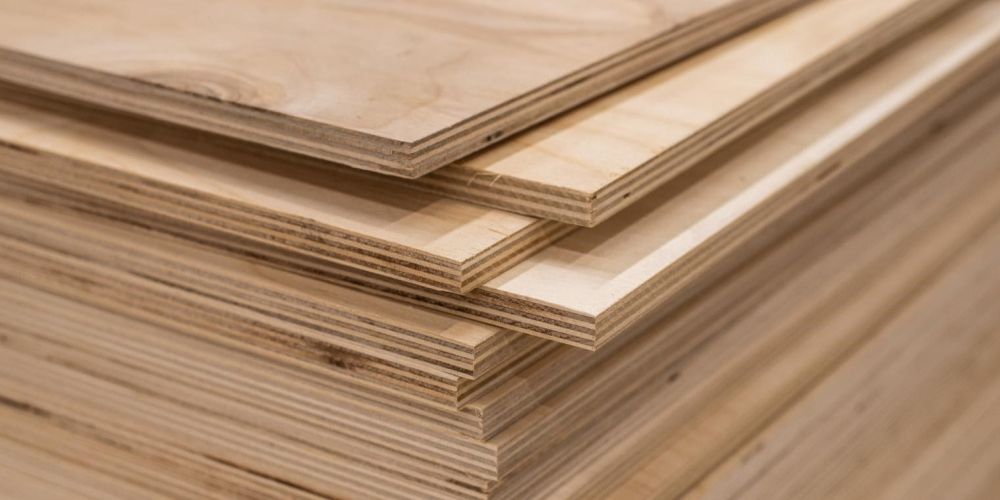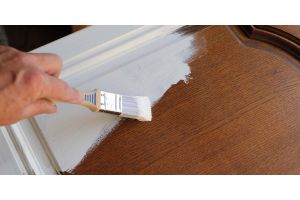
OSB (oriented strand board) and plywood are two of the most widely used sheet materials in construction, DIY projects and furniture building. But what exactly are they, and which one should you choose for your specific application? Here we’ll examine the pros and cons of OSB and plywood to help UK homeowners, builders and crafters decide which sheet to use.
Key Features
| Question | Plywood | OSB |
|---|---|---|
| What is it made of? | Plywood is made from thin sheets of wood that have been glued together with alternating grain directions. | OSB is made from wood strands that have been oriented in perpendicular directions and glued together. |
| What are its strengths? | Plywood is strong, durable, and versatile. It is also moisture-resistant and can be used for a variety of applications, including furniture, flooring, and cabinetry. | OSB is strong, lightweight, and cost-effective. It is also moisture-resistant and can be used for a variety of applications, including subflooring, roofing, and siding. |
| What are its weaknesses? | Plywood can be more expensive than OSB and can be difficult to work with if it is not properly supported. | OSB is not as strong as plywood and can be damaged by moisture if not properly sealed. |
| What is it typically used for? | Plywood is typically used for furniture, flooring, and cabinetry. It is also used for roofing, siding, and subflooring. | OSB is typically used for subflooring, roofing, and siding. It is also used for furniture and cabinetry, but it is not as common as plywood for these applications. |
| Is it heavy? | Plywood is heavier than OSB. | OSB is lighter than plywood. |
| Is it waterproof? | Plywood is moisture-resistant, but it is not waterproof. It is important to seal plywood if it will be exposed to moisture. | OSB is not waterproof, but it is more moisture-resistant than plywood. It is still important to seal OSB if it will be exposed to moisture. |
| Is it expensive? | Plywood can be more expensive than OSB. | OSB is generally less expensive than plywood. |
What is OSB?
OSB stands for oriented strand board. It is a structural wood panel made from shredded wood chips and adhesive resin formed into mats and pressed into sheet panels. The wood strands are oriented lengthwise to provide strength and stiffness.
OSB was introduced to the UK market in the 1980s as a cheaper alternative to plywood. Today it is widely used in flooring, wall sheathing, roofing, and other construction applications. OSB comes in a range of thicknesses from 6mm to 18mm and panel sizes up to 2.4m x 1.2m.
Advantages of OSB
- Affordable - OSB sheets typically cost 15-30% less than plywood panels of equivalent size and thickness. This makes it an economical choice for large projects.
- Structurally strong - The oriented wood strands give OSB excellent strength, stiffness and load-bearing capabilities along the panel’s length.
- Workable - OSB cuts, drills, shapes and fastens easily using standard woodworking tools. The rough texture means splintering is minimal.
- Water resistant - Modern adhesives make OSB highly resistant to delamination and deterioration when exposed to moisture over short periods.
- Range of grades - OSB is available in grades from 1 to 4, allowing the strength and quality to be matched to the application.
Disadvantages of OSB
- Not moisture proof - OSB should be kept dry and does not perform well with prolonged wetting. It can swell, warp and lose strength if left unprotected.
- Weaker across the width - OSB has less stiffness across the panel compared to plywood. Additional bracing may be needed for some applications.
- Prone to damage - Unprotected OSB edges are easily damaged, particularly during transport and installation. Panels must be handled with care.
- Contains formaldehyde - Like MDF, some grades of OSB contain urea-formaldehyde resin which can irritate eyes and airways during cutting and sanding.
- Rough appearance - OSB has a distinctive rough, patchwork appearance that makes it unsuitable for exposed decorative surfaces in many applications.
What is Plywood?
Plywood consists of thin sheets of wood veneer glued together in alternating grain directions. The cross-ply construction provides strength, stability and resistance to cracks and splits.
Softwood plywood uses pine, larch or spruce veneers while hardwood plywood favours birch and other hardwoods. Exterior grade plywood is suitable for outdoor use thanks to its moisture-resistant adhesive.
Plywood comes in a range of sizes, generally from 1220mm x 2440mm for standard construction panels. Thicknesses range from 3mm to over 25mm. Grades vary by veneer quality, number of plies and allowable defects.
Advantages of Plywood
- Strong and stiff - The crossband veneer layers make plywood very rigid and able to span gaps without sagging. It has excellent screw and nail retention strength.
- Dimensionally stable - Plywood resists warping, twisting and buckling better than solid wood. It maintains its shape well over the long term.
- Attractive appearance - The layered veneers create an attractive pattern on the panel edges. Better grades feature knot-free faces with real wood textures.
- Moisture resistant - Exterior plywood can be exposed to rain and damp conditions. It performs well in humid environments when properly sealed and finished.
- Range of types - Many varieties of plywood are available including hardwood, softwood, marine grade, treated, fire retardant, and more.
Disadvantages of Plywood
- Cost - Good quality plywood is significantly more expensive than OSB and other wood composite panels. Prices rise further for appearance grades.
- Heavy and bulky - Plywood weighs more than OSB or particleboard. Large sheets can be awkward and difficult to handle and transport.
- Prone to delamination - Plywood can separate at the plies when subjected to excessive moisture over time. Avoid using panels with existing delamination.
- Unsuitable for all uses - While strong, plywood lacks the structural stiffness of OSB for subfloors, wall and roof sheathing applications.
- Voids and defects - Lower grades of plywood allow knots, patches and gaps which interrupt the appearance and strength.
OSB vs. Plywood: Which Should You Choose?
Now that you know the key differences between OSB and plywood, how do you select the best material for your project?
Here are some key considerations for choosing between plywood or OSB:
- Subfloors - OSB is the top choice for stiff, strong and economical subflooring in timber frame construction. Plywood is prone to squeaking unless glued and screwed.
- Wall sheathing - OSB and plywood both perform well, but OSB is cheaper. Use moisture-resistant grades and avoid direct water exposure.
Roof sheathing - OSB is preferred due to lower cost but stiffer plywood minimises sagging on wide spans. - Concrete formwork - Plywood’s dimensional stability makes it best for achieving smooth professional concrete finishes.
- Kitchen cabinets and furniture - Plywood is better for exposed surfaces and edges thanks to attractive appearances and elegant edge profiles.
Outdoor projects - Exterior plywood is a must for durable performance in garden structures, sheds, pergolas and other outdoor uses. - Humid conditions - Plywood is the safer choice in damp basements, bathrooms and other humid indoor areas where moisture damage is a concern.
- Workbenches and hobby projects - Plywood provides robust surfaces for garage and hobby shop use. OSB tends to loosen at the strands and degrade over time from hammering and abrasion.
For load-bearing structures, OSB generally provides the most economical and structurally robust option. For fine furniture and exposed surfaces, plywood’s attractive finish and edge qualities justify the higher costs. Matching the panel to the specifics of your project will ensure the best outcome.
In summary, OSB works well where strength is key and budgets are tight. Plywood shines when higher quality with attractive wood textures and finishes are needed. Understanding the strengths of each material allows UK DIYers to choose the right sheeting for their particular project.









